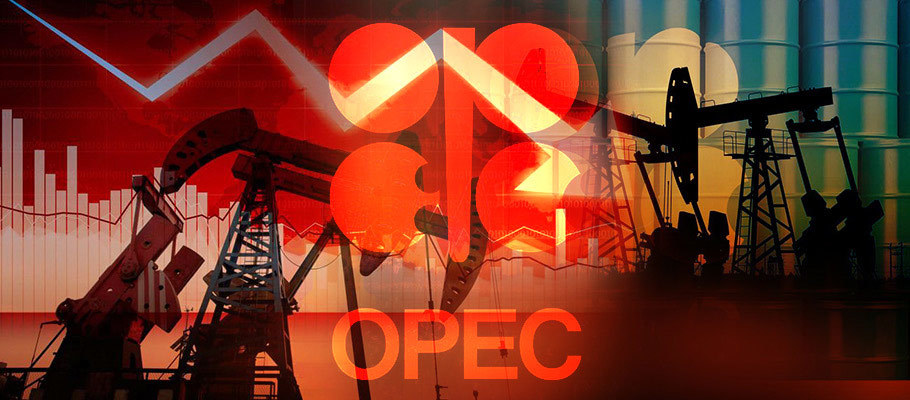
Published: April 6th, 2020
About four weeks ago on March 3, Organization of Petroleum Exporting Countries (OPEC) ministers met in Vienna. They were supposed to agree to cut down oil production to help stabilize the price of the product. A stalemate ensued, instead. Late last week, the price of crude oil rose following reports that major producers may cut production. Now, the oil industry is in a state of confusion following reports that the ministers’ virtual meeting set to for Monday may not happen. The outlook now is that even if the producers agree to slash the output, the price volatility may not be affected much…
According to ANZ Bank, the volatility of oil prices may not go away soon even if the OPEC ministers agree to cut down production. This school of thought is getting support from the key remarks made last week about the price of crude oil.
President Trump tweeted about the talks he had with Saudi Arabia and Russia who both promised to cut down production by between 1 and 15 million barrels per day. Saudi Arabia called on the other OPEC members and their allies to meet urgently and agree on a fair deal that will make the oil markets stable again.
The ANZ Bank, however, thinks that the outcome of any such meeting will not affect the volatility much. Their stand is supported by the global commerce environment. The lockdowns that many countries and cities have witnessed along with closed borders and restricted travel has sharply affected the demand for oil.
According to FXStreet, the online forex analysis and news platform, the overall demand for crude oil has dropped by some 20 million barrels per day.
U.S. President Donald Trump held a meeting with oil executives on Friday, March 3. The discussions of the meeting centered on the slumping oil prices that have threatened businesses following the coronavirus outbreak.
Trump told reporters after the meeting that he was keen to work with the industry players to figure out a way to get the energy business back on track. The president was flanked by members of his cabinet, lawmakers from the oil states, and executives from Chevron Corp, Exxon Mobil, and Continental Resources.
The meeting came in the wake of a sharp slump in the price of this essential commodity. On Friday afternoon, the international benchmark Brent crude went for $45.46 per barrel, down some 8%. The U.S. West Texas Intermediate sunk by a similar margin to trade at $41.93 a barrel. These figures are the lowest since 2017.
The uncertainty about containing the volatility happening now is compounded by the seeming lack of coordination among OPEC member states. Credible sources indicate that the OPEC ministers’ meeting that was set to take place on Monday, 7 April has been postponed to Thursday. Besides, Russia and Saudi Arabia, the two principal players expected to set the tone for cutting production, seem to be embroiled in a spat.
Thursday’s meeting was scheduled following President Trump’s message that he expected Saudi Prince Mohammed bin Salman and Russian President Vladimir Putin to make public the details of their agreement to cut down oil production.
A delay will most likely hurt the oil prices that have since recovered from a losing-streak that lasted five weeks. On Thursday, U.S. oil gained 25%, its best day. It went on to gain another 12% on Friday. The product closed the week with an overall improvement of 32%.
Industry players think that the price may sink in the coming week as a result of the challenges highlighted above. According to John Kilduff, the founding partner of Again Capital, Thursday and Friday showed that the market had a lot of optimism in the price of oil. He added that the tiff between Russia and Saudi, however, may deter the markets from sustaining the price surge.
Despite the price increase, the price of West Texas Intermediate crude oil remains 40% down overall. This performance is due to the disruptions caused by the coronavirus outbreak. The price war between Russia and Saudi Arabia is also partly to blame.
Meanwhile, Trump has threatened to impose tariffs on Russian and Saudi oil exports. The U.S. president said that the two countries are destroying themselves by engaging in an oil price war. Trump added that he may be forced to act tough to protect the U.S. oil industry.
On the sidelines of the meeting that Trump had with the oil execs, he remarked that both the Russian and Saudi Arabian economies depend largely on oil. Saying that it is to their advantage to sort out the current confusion in the crude oil market, Trump added that since the impasse poses a threat to numerous U.S. jobs. He said he is ready to do everything within his power to avert a catastrophe.
The U.S. oil industry has expanded to surpass both Russia and Saudi Arabia. The country now produces over 15 million barrels per day against Russia and Saudi Arabia’s 11 million and 12 million barrels per day respectively.
Industry players think that Trump’s undecided nature is among the many factors that may sustain the volatility currently experienced. The lockdown of most of Europe and North America and the impasse between Russia and Saudi Arabia are not helping either.
Producers worry about putting forth more oil that is necessary.
The effects of the coronavirus pandemic have included a slump in most markets including that of crude oil. The volatility currently experienced comes from the conflicting information flying around coupled with the impasse between the world’s second and third-largest producers. What remains to be seen is if the OPEC ministers will successfully carry out their virtual meeting to agree to cut down production. With Russia and Saudi Arabia pulling in different directions, the possibility of the meeting hangs in the balance.